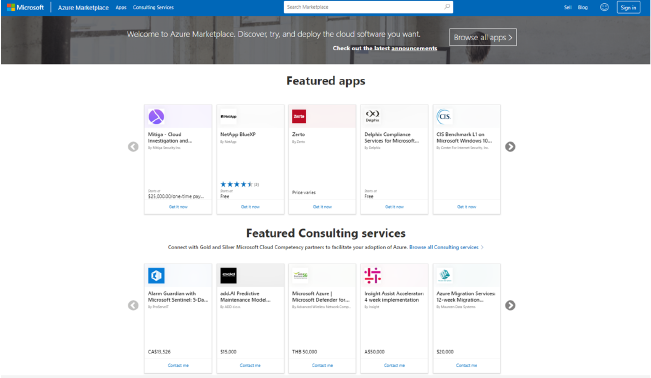Blog
The Evolution of Software Procurement

In the 1950s, IBM and UNIVAC began offering software as part of their mainframe systems. The software was custom-built for specific tasks, like scientific calculations and payroll processing.
From the 70s, software started being sold separately from hardware, and commercial software vendors like Microsoft and Oracle rose to prominence. MS-DOS, Microsoft's operating system, made a significant impact during this time.
In the 1980s, software licensing was introduced as a procurement approach. Different licensing models were developed, including perpetual licenses, site licenses, and volume licenses.
The internet revolutionized software distribution in the 2000s-2010s with the rise of Software-as-a-Service (SaaS) and open-source software. Mobile App stores also emerged with the popularity of mobile applications.
Today, we have cloud platforms like Microsoft Azure, Amazon Web Services (AWS), and Google Cloud Platform (GCP) that enable scalable, on-demand software deployments through subscription-based models, with companies offering cloud-based services for various purposes.
The transition from Software-as-a-Product to cloud-based Software-as-a-Service reflects the dynamic nature of the software industry.
Gartner predicts that by 2025, 80% of sales interactions will take place in digital channels. As a result, companies must adapt their go-to-market systems to cater to the digital future.
The Future of Software Procurement
It's clear that software procurement is trending towards more accessible options and streamlined purchasing and procurement processes.
The future of Software selling is to cater to an audience that desires the ability to procure, deploy, and consume solutions quickly and efficiently. In this highly cost-aware environment, customers also want the ability to only pay for what they use, promoting transparency and flexibility.
Over the last three years, cloud marketplaces have evolved significantly. According to Tackle’s State of Cloud Marketplaces 2022 report, successful companies see as much as 50% of new business flowing through cloud marketplaces within a few years after launch.
The adoption of cloud marketplaces by software buyers is driven by procurement speed, scalability, flexibility, and risk reduction. According to Tackle’s report, 77% of buyers have some level of Enterprise Cloud Agreement (EA) in place with a cloud provider. Meaning that they leverage their Enterprise Agreement to procure their software via a Cloud Provider’s Cloud Marketplace, like Microsoft’s Azure Marketplace.
Companies that develop, sell, resell, or co-sell software solutions have a massive opportunity to reach a broader audience and access new revenue streams. They must consider the growing importance of cloud marketplaces as a strategic channel for software procurement.
According to Canalys, a leading market research firm, cloud marketplaces are poised for remarkable growth. Here are some key predictions for 2025:
- Cloud Marketplaces will grow to more than $45 Billion. (This represents an impressive 84% compound annual growth rate (CAGR))
- Large cloud marketplaces will grow as the procurement channel of choice for buyers.
- By 2025, almost a third of marketplace procurement will be done via channel partners on behalf of their end customers.

The opportunity with Azure Marketplace
The Azure Marketplace is a digital storefront, also called a Cloud Marketplace, where you can find, try, buy, and deploy thousands of industry-leading apps and services that run on Azure. It’s the premier destination for all your software needs, certified and optimized to run on Microsoft’s cloud platform. The Azure Marketplace boasts an impressive catalog of third-party software solutions and services available for you to try, use, and resell. Whether you are looking for security solutions, container platforms, SaaS solutions, databases, or even blockchain services, you can discover and explore a wide range of options in the Azure Marketplace.
As an Independent Software Provider (ISV) or a Cloud Solutions Provider (CSP), you can leverage the Azure Marketplace to sell or resell solutions and services to a global audience.
Microsoft’s Azure Marketplace is a powerful channel to market, sell, and co-sell your solutions. As of mid-2021, approximately 15,700 products and services were offered on the Azure Marketplace, and by January 2024 this number had grown to over 41,000.
As an Independent Software Vendor (ISV), when you publish to Azure Marketplace, you gain access to the Microsoft partner ecosystem and joint go-to-market activities with Microsoft. This can significantly boost your visibility, reach, and opportunity to co-sell your offer with Microsoft and CSP partners, which can help you reach a wider audience and grow your global customer base.
When you tap into the Microsoft partner ecosystem, a new sales channel emerges where you can sell your offer through the Cloud Solution Provider (CSP) program, CSPs can also sell your solutions as part of a bundled solution and attach their services to the opportunity. This approach creates value for the partnership and a complete solution to the end customer’s needs.
Customers can take advantage of their existing agreements with Microsoft to purchase your solutions via the Azure Marketplace. The Marketplace offers a convenient way to manage costs across the organization, with defined user roles and permissions, and a single bill for all purchases. This can result in significant savings in time and resources.
In The Total Economic Impact of the Microsoft Commercial Marketplace by Forrester Consulting, during interviews with customers, the research found that the Azure Marketplace:
- Reduced employee time for onboarding new vendors by 75%.
- Reduced employee effort required for each procurement engagement by 50%.
- Optimized Azure Cloud budget by recapturing up to 50% of at-risk spending.
The Azure Marketplace opportunity is multi-faceted, including benefits for Independent Software Vendors (ISVs), Resell partners (CSPs), and end-customers.
Now is the time to evaluate and roadmap your path to success on the Azure Marketplace.
I want to benefit from the Azure Marketplace as a CSP reseller, what’s in it for me?
- By participating in the Azure Marketplace, you can expand your portfolio of offerings beyond Microsoft products.
- Sell ISV solutions alongside Microsoft offerings.
- Offer a diverse range of solutions to meet various customer needs.
- As a CSP reseller, you can earn margins on ISV solutions sold through the Azure Marketplace. This creates additional revenue streams for your business.
If you are an Independent Software Vendor (ISV) and have a software solution that you want to sell on the Azure Marketplace, or if you are a resell partner with an ISV as an end-customer and want to benefit from co-selling using the Microsoft commercial engine, please reach out to us. We would be happy to be your partner of choice and assist you in leveraging the Azure Marketplace.
Please reach out to us to set up a 1-1 dedicated session where we will determine how best to leverage Azure Marketplace to elevate your journey to success.
